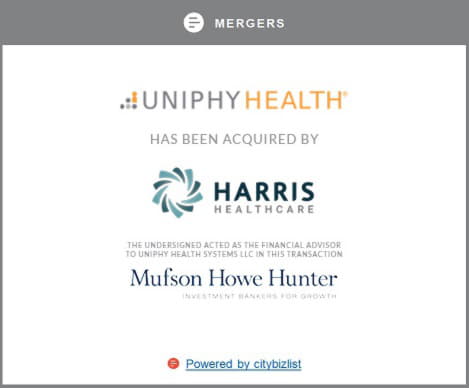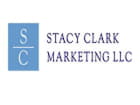Insmed Incorporated (Nasdaq: INSM), a global biopharmaceutical company on a mission to transform the lives of patients with serious and rare diseases, today reported financial results for the third quarter ended September 30, 2020, and provided a business update.
"I am pleased to report on a very productive third quarter for Insmed as we made significant progress across our programs while maintaining ARIKAYCE performance in the U.S. amidst the ongoing pandemic," commented Will Lewis, Chair and Chief Executive Officer of Insmed. "Driven by the efforts of a world-class team, we reached several critical milestones for ARIKAYCE, including marketing authorization in the European Union, approval of an sNDA that adds meaningful efficacy data to our U.S. label, and continued advancement of our frontline clinical program. Importantly, we also advanced plans to initiate a global, registrational Phase 3 study of brensocatib in NCFBE and initiated a Phase 1 study of TPIP. As we look ahead to 2021, we believe we are well-positioned to carry this momentum forward and execute on our goals."
Third Quarter 2020 Financial Results
- Total revenue for the third quarter ended September 30, 2020, was $43.6 million, comprising U.S. net sales of $42.0 million and ex-U.S. net sales of $1.6 million. This compares to total revenue of $38.9 million for the third quarter of 2019.
- Cost of product revenues (excluding amortization of intangible assets) was $10.6 million for the third quarter of 2020, compared to $6.4 million for the third quarter of 2019.
- Research and development (R&D) expenses were $41.4 million for the third quarter of 2020, compared to $34.3 million for the third quarter of 2019.
- Selling, general, and administrative (SG&A) expenses for the third quarter of 2020 were $46.6 million, compared to $53.3 million for the third quarter of 2019.
- For the third quarter of 2020, Insmed reported a GAAP net loss of $63.7 million, or $0.63 per share, compared to a GAAP net loss of $60.7 million, or $0.68 per share, for the third quarter of 2019.
Recent Corporate Developments & Program Highlights
ARIKAYCE Global Advancement
On October 28, 2020, Insmed announced that the European Commission (EC) had granted marketing authorization for ARIKAYCE Liposomal 590 mg Nebuliser Dispersion for the treatment of nontuberculous mycobacterial (NTM) lung infections caused by Mycobacterium avium complex (MAC) in adults with limited treatment options who do not have cystic fibrosis (CF). Consideration should be given to official guidance on the appropriate use of antibacterial agents. The Company plans to launch ARIKAYCE first in Germany, with the United Kingdom and other European markets to follow, subject to local reimbursement processes.
In Japan, Insmed continues to anticipate launching ARIKAYCE in the middle of 2021, pending approval of its new drug application for the treatment of patients with NTM lung disease caused by MAC who did not sufficiently respond to prior treatment.
ARIKAYCE Label Expansion
On October 19, 2020, the U.S. Food and Drug Administration (FDA) approved an sNDA for ARIKAYCE, adding important efficacy data regarding the durability and sustainability of culture conversion to the ARIKAYCE label. The data, which are from the Phase 3 CONVERT study of ARIKAYCE, demonstrate that the addition of ARIKAYCE to guideline-based therapy (GBT) was associated with sustained culture conversion through the end of treatment as well as durable culture conversion three months post-treatment compared with GBT alone.
Insmed also continues to advance plans to pursue regulatory approval of ARIKAYCE as a front-line therapy for patients with MAC lung disease. The Company plans to initiate two clinical trials in the fourth quarter of 2020 that will be conducted in parallel: ENCORE, a pivotal study intended to fulfill the post-marketing requirement to allow full approval of ARIKAYCE in the U.S., and ARISE, an interventional study designed to validate the patient-reported outcome (PRO) tool that will be used to measure efficacy in ENCORE.
Brensocatib Advancement
In September 2020, data from the Phase 2 WILLOW study of brensocatib in patients with NCFBE were published online in the New England Journal of Medicine and presented during a late-breaking session at the European Respiratory Society International Congress 2020.
Insmed remains on track to initiate its planned registrational Phase 3 ASPEN trial of brensocatib in patients with NCFBE by the end of 2020. The Company has also announced plans to advance a clinical development program for brensocatib in patients with CF.
TPIP Advancement
In September 2020, Insmed announced that it had initiated a Phase 1 healthy volunteer trial of TPIP in the United States. The objective of this first-in-human single ascending dose and multiple ascending dose study is to assess the pharmacokinetics and tolerability profile of TPIP. Four dosing strengths have now been completed. Top-line data from the full Phase 1 study are expected in the first quarter of 2021 and the Company has announced plans to initiate a Phase 2a study in patients with pulmonary arterial hypertension (PAH) in early 2021.
Balance Sheet
As of September 30, 2020, Insmed had cash and cash equivalents of $588.8 million. The Company's total operating expenses for the third quarter of 2020 were $89.2 million. Adjusted operating expenses, a non-GAAP measure defined below, for the third quarter of 2020 were $76.8 million.
The Company plans to continue investing in the following key activities in 2020:
| (i) | U.S. commercialization of ARIKAYCE; |
| (ii) | clinical trial activities, including (a) initiation of ENCORE, the pivotal study intended to allow full approval of ARIKAYCE in the U.S. and, in parallel, ARISE, the interventional study to validate the PRO tool that will be used in ENCORE, (b) initiation of the Phase 3 ASPEN study of brensocatib in patients with NCFBE, and (c) the advancement of TPIP; and |
| (iii) | expansion in Japan and Europe to support pre-commercial activities for ARIKAYCE in Japan and launch activities for ARIKAYCE in initial European countries. |
About ARIKAYCE
ARIKAYCE is approved in the United States as ARIKAYCE® (amikacin liposome inhalation suspension) and in the EU as ARIKAYCE® Liposomal 590 mg Nebuliser Dispersion. Current international treatment guidelines recommend the use of ARIKAYCE for appropriate patients. ARIKAYCE is a novel, inhaled, once-daily formulation of amikacin, an established antibiotic that was historically administered intravenously and associated with severe toxicity to hearing, balance, and kidney function. Insmed's proprietary PULMOVANCE™ liposomal technology enables the delivery of amikacin directly to the lungs, where liposomal amikacin is taken up by lung macrophages where the infection resides, while limiting systemic exposure. ARIKAYCE is administered once daily using the Lamira® Nebulizer System manufactured by PARI Pharma GmbH (PARI).
About PARI Pharma and the Lamira® Nebulizer System
ARIKAYCE is delivered by a novel inhalation device, the Lamira® Nebulizer System, developed by PARI. Lamira® is a quiet, portable nebulizer that enables efficient aerosolization of ARIKAYCE via a vibrating, perforated membrane. Based on PARI's 100-year history working with aerosols, PARI is dedicated to advancing inhalation therapies by developing innovative delivery platforms and new pharmaceutical formulations that work together to improve patient care.
About Brensocatib
Brensocatib is a small molecule, oral, reversible inhibitor of dipeptidyl peptidase 1 (DPP1) being developed by Insmed for the treatment of patients with non-cystic fibrosis bronchiectasis (NCFBE) and other neutrophil-mediated diseases. DPP1 is an enzyme responsible for activating neutrophil serine proteases (NSPs), such as neutrophil elastase, in neutrophils when they are formed in the bone marrow. Neutrophils are the most common type of white blood cell and play an essential role in pathogen destruction and inflammatory mediation. In chronic inflammatory lung diseases, neutrophils accumulate in the airways and result in excessive active NSPs that cause lung destruction and inflammation. Brensocatib may decrease the damaging effects of inflammatory diseases such as bronchiectasis by inhibiting DPP1 and its activation of NSPs.
IMPORTANT SAFETY INFORMATION FOR ARIKAYCE IN THE U.S.
| WARNING: RISK OF INCREASED RESPIRATORY ADVERSE REACTIONS ARIKAYCE has been associated with an increased risk of respiratory adverse reactions, including hypersensitivity pneumonitis, hemoptysis, bronchospasm, and exacerbation of underlying pulmonary disease that have led to hospitalizations in some cases. |
Hypersensitivity Pneumonitis has been reported with the use of ARIKAYCE in the clinical trials. Hypersensitivity pneumonitis (reported as allergic alveolitis, pneumonitis, interstitial lung disease, allergic reaction to ARIKAYCE) was reported at a higher frequency in patients treated with ARIKAYCE plus background regimen (3.1%) compared to patients treated with a background regimen alone (0%). Most patients with hypersensitivity pneumonitis discontinued treatment with ARIKAYCE and received treatment with corticosteroids. If hypersensitivity pneumonitis occurs, discontinue ARIKAYCE and manage patients as medically appropriate.
Hemoptysis has been reported with the use of ARIKAYCE in the clinical trials. Hemoptysis was reported at a higher frequency in patients treated with ARIKAYCE plus background regimen (17.9%) compared to patients treated with a background regimen alone (12.5%). If hemoptysis occurs, manage patients as medically appropriate.
Bronchospasm has been reported with the use of ARIKAYCE in the clinical trials. Bronchospasm (reported as asthma, bronchial hyperreactivity, bronchospasm, dyspnea, dyspnea exertional, prolonged expiration, throat tightness, wheezing) was reported at a higher frequency in patients treated with ARIKAYCE plus background regimen (28.7%) compared to patients treated with a background regimen alone (10.7%). If bronchospasm occurs during the use of ARIKAYCE, treat patients as medically appropriate.
Exacerbations of underlying pulmonary disease has been reported with the use of ARIKAYCE in the clinical trials. Exacerbations of underlying pulmonary disease (reported as chronic obstructive pulmonary disease (COPD), infective exacerbation of COPD, infective exacerbation of bronchiectasis) have been reported at a higher frequency in patients treated with ARIKAYCE plus background regimen (14.8%) compared to patients treated with background regimen alone (9.8%). If exacerbations of underlying pulmonary disease occur during the use of ARIKAYCE, treat patients as medically appropriate.
Anaphylaxis and Hypersensitivity Reactions: Serious and potentially life-threatening hypersensitivity reactions, including anaphylaxis, have been reported in patients taking ARIKAYCE. Signs and symptoms include acute onset of skin and mucosal tissue hypersensitivity reactions (hives, itching, flushing, swollen lips/tongue/uvula), respiratory difficulty (shortness of breath, wheezing, stridor, cough), gastrointestinal symptoms (nausea, vomiting, diarrhea, crampy abdominal pain), and cardiovascular signs and symptoms of anaphylaxis (tachycardia, low blood pressure, syncope, incontinence, dizziness). Before therapy with ARIKAYCE is instituted, evaluate for previous hypersensitivity reactions to aminoglycosides. If anaphylaxis or a hypersensitivity reaction occurs, discontinue ARIKAYCE and institute appropriate supportive measures.
Ototoxicity has been reported with the use of ARIKAYCE in the clinical trials. Ototoxicity (including deafness, dizziness, presyncope, tinnitus, and vertigo) were reported with a higher frequency in patients treated with ARIKAYCE plus background regimen (17%) compared to patients treated with background regimen alone (9.8%). This was primarily driven by tinnitus (7.6% in ARIKAYCE plus background regimen vs 0.9% in the background regimen alone arm) and dizziness (6.3% in ARIKAYCE plus background regimen vs 2.7% in the background regimen alone arm). Closely monitor patients with known or suspected auditory or vestibular dysfunction during treatment with ARIKAYCE. If ototoxicity occurs, manage patients as medically appropriate, including potentially discontinuing ARIKAYCE.
Nephrotoxicity was observed during the clinical trials of ARIKAYCE in patients with MAC lung disease but not at a higher frequency than background regimen alone. Nephrotoxicity has been associated with the aminoglycosides. Close monitoring of patients with known or suspected renal dysfunction may be needed when prescribing ARIKAYCE.
Neuromuscular Blockade: Patients with neuromuscular disorders were not enrolled in ARIKAYCE clinical trials. Patients with known or suspected neuromuscular disorders, such as myasthenia gravis, should be closely monitored since aminoglycosides may aggravate muscle weakness by blocking the release of acetylcholine at neuromuscular junctions.
Embryo-Fetal Toxicity: Aminoglycosides can cause fetal harm when administered to a pregnant woman. Aminoglycosides, including ARIKAYCE, may be associated with total, irreversible, bilateral congenital deafness in pediatric patients exposed in utero. Patients who use ARIKAYCE during pregnancy, or become pregnant while taking ARIKAYCE should be apprised of the potential hazard to the fetus.
Contraindications: ARIKAYCE is contraindicated in patients with known hypersensitivity to any aminoglycoside.
Most Common Adverse Reactions: The most common adverse reactions in Trial 1 at an incidence ?5% for patients using ARIKAYCE plus background regimen compared to patients treated with background regimen alone were dysphonia (47% vs 1%), cough (39% vs 17%), bronchospasm (29% vs 11%), hemoptysis (18% vs 13%), ototoxicity (17% vs 10%), upper airway irritation (17% vs 2%), musculoskeletal pain (17% vs 8%), fatigue and asthenia (16% vs 10%), exacerbation of underlying pulmonary disease (15% vs 10%), diarrhea (13% vs 5%), nausea (12% vs 4%), pneumonia (10% vs 8%), headache (10% vs 5%), pyrexia (7% vs 5%), vomiting (7% vs 4%), rash (6% vs 2%), decreased weight (6% vs 1%), change in sputum (5% vs 1%), and chest discomfort (5% vs 3%).
Drug Interactions: Avoid concomitant use of ARIKAYCE with medications associated with neurotoxicity, nephrotoxicity, and ototoxicity. Some diuretics can enhance aminoglycoside toxicity by altering aminoglycoside concentrations in serum and tissue. Avoid concomitant use of ARIKAYCE with ethacrynic acid, furosemide, urea, or intravenous mannitol.
Overdosage: Adverse reactions specifically associated with overdose of ARIKAYCE have not been identified. Acute toxicity should be treated with immediate withdrawal of ARIKAYCE, and baseline tests of renal function should be undertaken. Hemodialysis may be helpful in removing amikacin from the body. In all cases of suspected overdosage, physicians should contact the Regional Poison Control Center for information about effective treatment.
U.S. INDICATION
LIMITED POPULATION: ARIKAYCE® is indicated in adults, who have limited or no alternative treatment options, for the treatment of Mycobacterium avium complex (MAC) lung disease as part of a combination antibacterial drug regimen in patients who do not achieve negative sputum cultures after a minimum of 6 consecutive months of a multidrug background regimen therapy. As only limited clinical safety and effectiveness data for ARIKAYCE are currently available, reserve ARIKAYCE for use in adults who have limited or no alternative treatment options. This drug is indicated for use in a limited and specific population of patients.
This indication is approved under accelerated approval based on achieving sputum culture conversion (defined as 3 consecutive negative monthly sputum cultures) by Month 6. Clinical benefit has not yet been established. Continued approval for this indication may be contingent upon verification and description of clinical benefit in confirmatory trials.
About Insmed
Insmed Incorporated is a global biopharmaceutical company on a mission to transform the lives of patients with serious and rare diseases. Insmed's first commercial product is a first-in-disease therapy approved in the United States and the European Union to treat a chronic, debilitating lung disease. The Company is also progressing a robust pipeline of investigational therapies targeting areas of serious unmet need, including neutrophil-mediated inflammatory diseases and rare pulmonary disorders. Insmed is headquartered in Bridgewater, New Jersey, with a growing footprint across Europe and in Japan. For more information, visit www.insmed.com.









